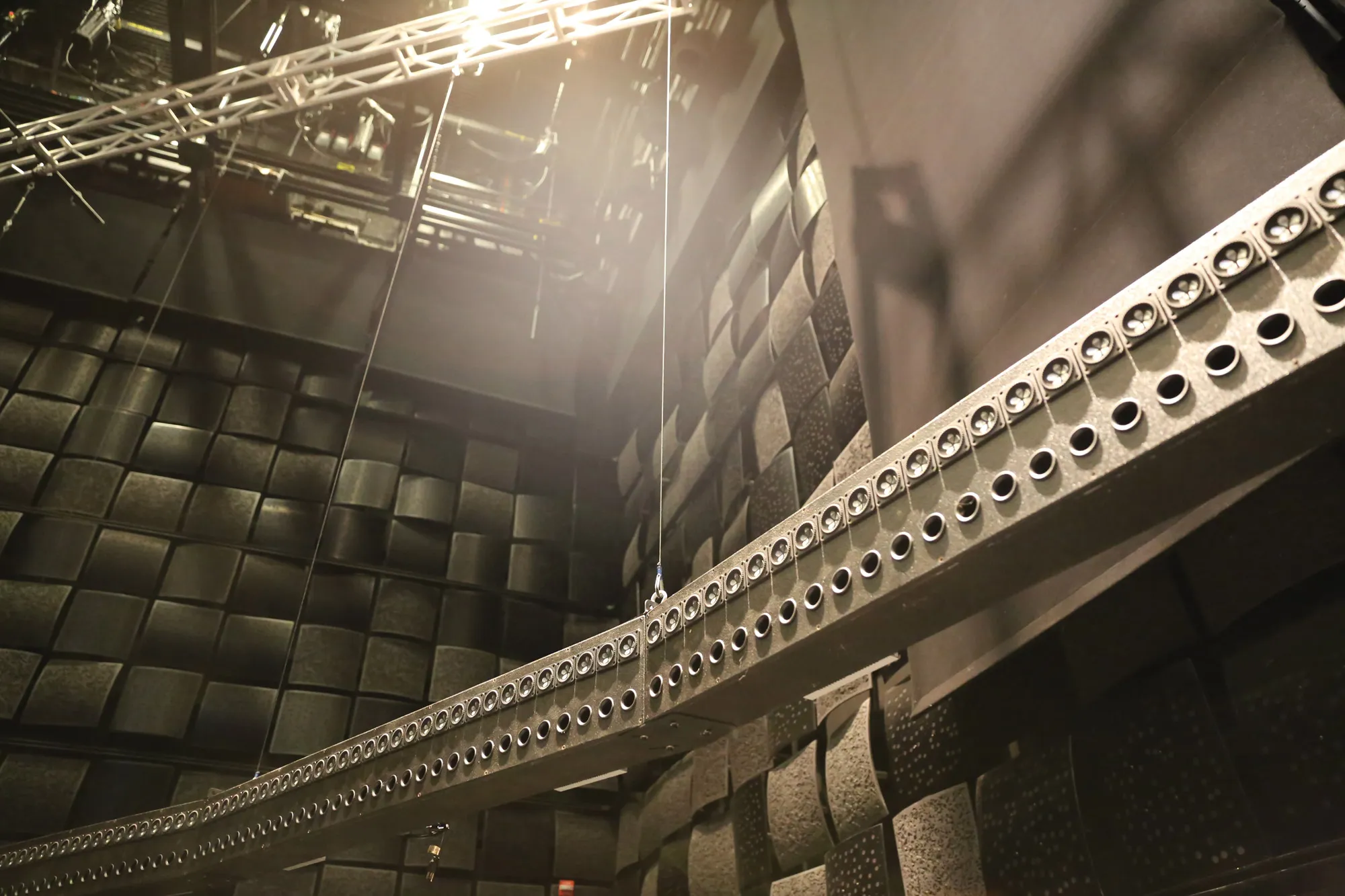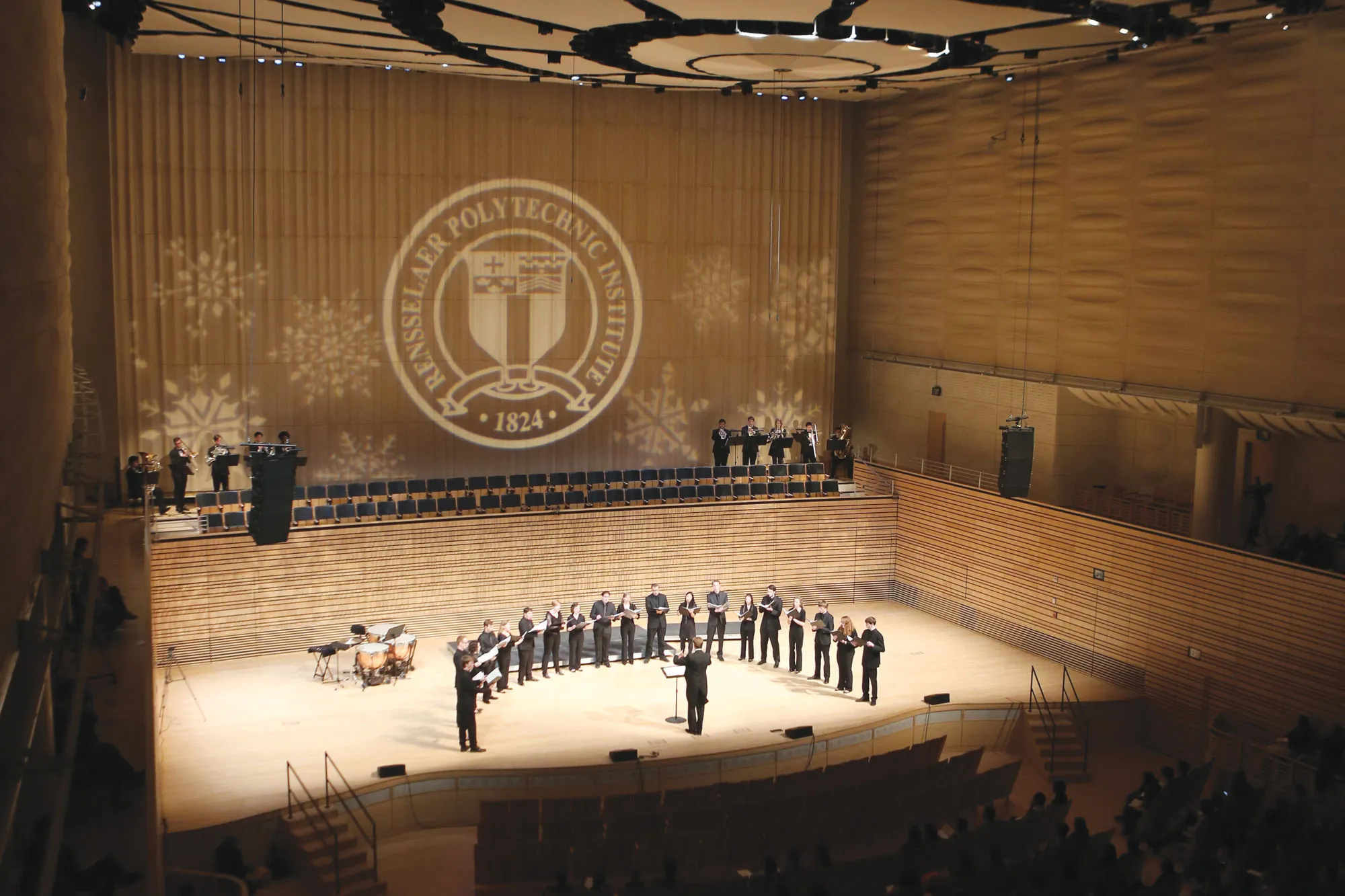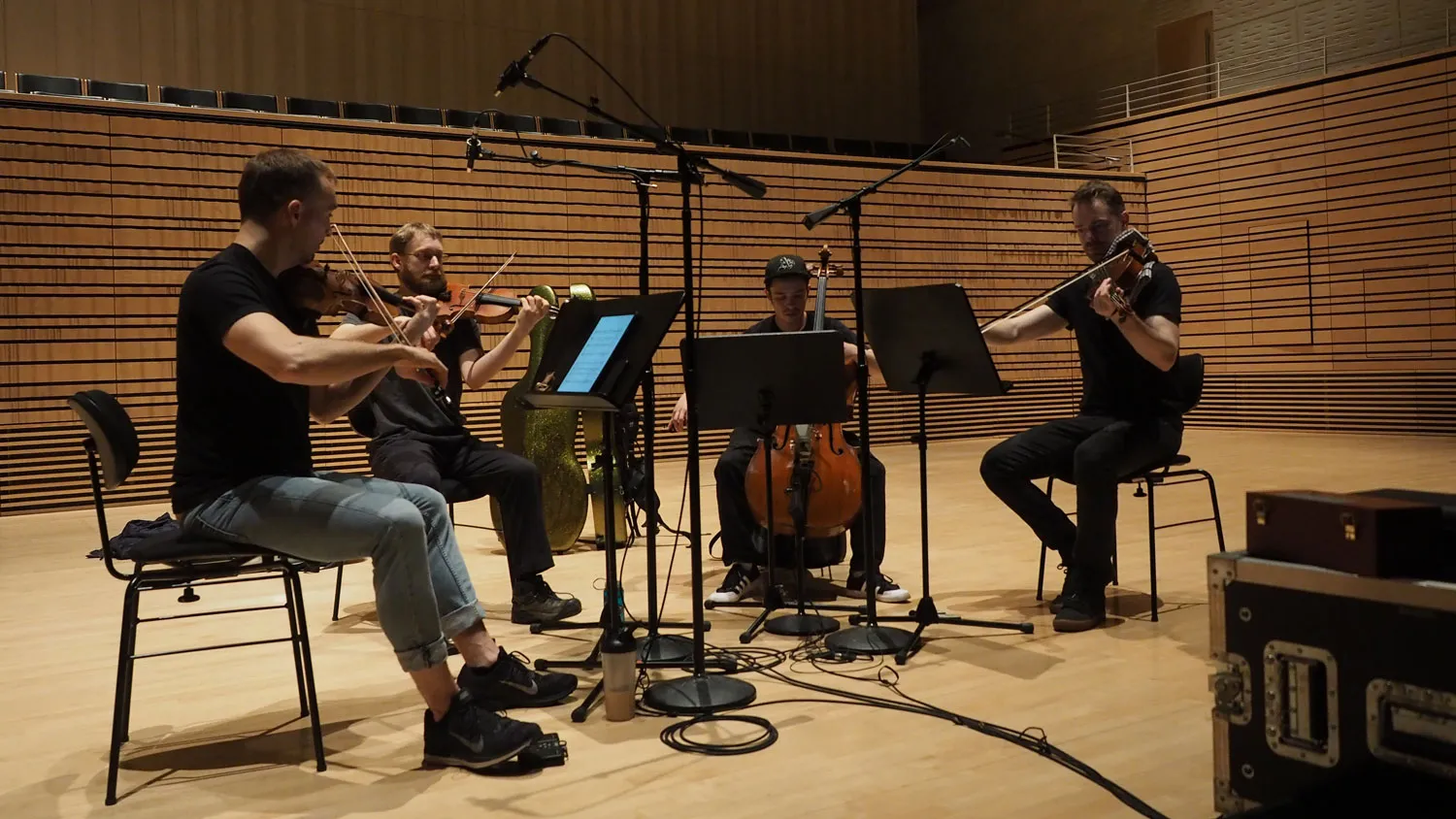
Resonances
Lesley Flanigan is in residence in Studio 2 to produce a new EMPAC-commissioned performance-installation that continues her exploration into the sculptural potential of sound.
Developing a performance for voice, speakers, electronic tone, and the resonance between, this residency follows from her visit in early 2020 in which she explored the acoustic environment of EMPAC’s concert hall with sine-wave oscillators that generate low-frequency tones, her signature speaker sculpture instruments, and pitches from her own voice.
Lesley Flanigan working in residence in December 2019. Photo: Anne Leilehua Lanzilotti/EMPAC.




